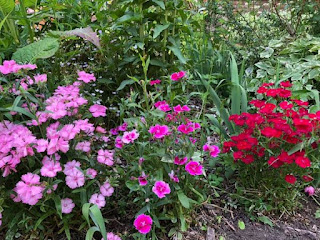Global warming. So much progress, huh? (a message for the younger scientists)
Last weekend, while tiding an old trunk full of notes and papers and other stuff that sits in our lounge under a zillion plant pots, I came across this Newsweek cover I show above. The leading title: “No more hot air. Its’ time to talk sense about the Environment” caught my eye immediately. The issue is dated June 1992, that is 28 years ago and referred to a United Nations Earth Summit (actually the first one) that was held in Rio de Janeiro that year. Among a list of issues that were on the table then, I noted and agenda (named Agenda 21) through which industrial nations would help poor countries develop their economies without damaging their environments.
The IPCC was created in 1988 (and was awarded a Nobel Prize in 2007) and the Kyoto protocol was signed by many countries in 1997. Yet, I often wonder how much has been achieved since then or if we have done enough. We see glaciers melting, droughts and floods more often than expected or in new areas, and several biological groups thoroughly dropping in numbers (pollinators, for example). At the same time, we are, to some degree, going “electrical” when it comes to mobility and also, we see that industrial emissions- give or take- have at least not increased worldwide as could have. But these are simple observations. Hard core data on the change inflicted upon climate by us, is available and uncontestable.
We can agree on the fact that not all world leaders are up to the challenge. In fact only recently, some have ushered dominant countries to sign-off international protocols and treaties. Still, if some a little more than others, most societies have become more attentive to what global warming implies. In turn, an array of world class ecologists and climate scientists (to state a few examples) have tackled the issues from many angles and published many papers, often in high impact journals. Many have delivered conferences, talked to policy makers and participated in international panels on global change. But, how has this translated into bettering the lively hoods of those living in poorer countries without damaging the environment? How much has been done, not just in reducing emissions but in keeping the world’s diversity, including crucially important forests healthy, as a part of our struggle against global change?
Producing food for all of us in a sustainable manner remains (to me at least) and utopia. Let us consider one example: Argentina. A large country with 45 million citizens whose GDP relies strongly on agricultural produce and that is not usually listed as a poor country. Once considered, the “The Barn of the World” because of its high productivity for growing cereals and exporting such produce, Argentina also bears a variety of climates, landscapes and ecosystems: from snowy peaks, to sweltering swamps: from glaciers to rain forests. Also, the country has been listed 9th in terms of biodiversity richness. Considering forests for instance, while not a “forest country”, 10% (26 million ha) of its land surface area is currently covered with natural forests and there are an estimated 1.3 million ha. of forest plantations (I’ll talk about this issue another day).
But these forests in Argentina suffer greatly. It has been estimated that in the period 1930-2005, 66% of the natural forests were lost, mostly to agriculture1. According to FAO, deforestation rates in Argentina are among the highest of South America2, reaching up to 1 million hectares per annum. Moreover, by increasing land for agriculture in this way, it does not seem we have achieved much in terms of economy development. GDP per capita for Argentina in 2018, was under 12 US dollars, compared to industrialized economies such as the USA, with nearly 63 US dollars or 47 USD reported for the same year in Germany.
Of course, we are all aware of the role played by forests in mitigating global warming, among other-not less important- sustainability related issues. So what part of “developing the economies of poorer nations without damaging their environments” stated 28 years ago, have we missed? Just imagine this pattern I describe for Argentina in many (too many!) countries-even poorer- around the World. As scientists we have done a great deal, but it seems we still fail in converting the much looked for impact factors of our publications into policies. The next generation of ecologists may need to pay more attention to this. Or, at least, this is something we need to ruminate on further.
PS: The trunk made it to Argentina with clothes and -I imagine- a great deal of expectations, brought by my spouse’s grandmother when she came escaping poverty and lack of opportunities found in post WWII Europe. It is ironic that as of today-75 years later-, Argentina has more than 40% of its population in sheer poverty, inflation rates exceed 45% yearly and unemployment rarely has fallen below 10%.
1. Dirección de Bosques (2005). Primer Inventario Nacional de Bosques Nativos. Informe nacional. Proyecto Bosques Nativos y Áreas protegidas BIRF 4085-AR, 1998-2005.Argentina.gob.ar.
2. Zak, M. & Cabido.M.2010. El avance de la agricultura es la mayor causa de deforestación. Argentina Investiga.




Comments
Post a Comment